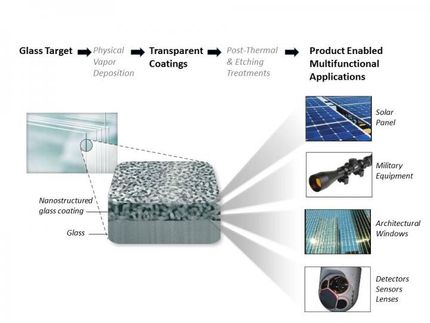Wet weather coatings
Advertisement
Ever wished that your waterproof jacket could actively remove water from the inside? Now, scientists in Australia and the US have coated a fabric to do just that by transferring water exclusively in one direction.
Tong Lin colleagues coated a porous polyester fabric on both sides with a mixture of titanium dioxide and organosilanes. This combination is similar to a common coating for superhydrophobic surfaces. Shining UV light on one side of the fabric initiates a reaction that changes the coating and because the effect of the light diminishes the further it penetrates into the fabric, a gradient forms from one side to the other.
The side without UV light remains hydrophobic while the other side becomes hydrophilic. When water is dropped onto the hydrophobic side of the fabric, it is quickly transported through the polyester to the hydrophilic side where it then stays.
The team believes the simple coating technique could be used to produce high-performance fabrics for sports and military use, and even industrial membranes.
Original publication: Hongxia Wang, Jie Ding, Liming Dai, Xungai Wang and Tong Lin, Journal of Materials Chemistry 2010.
Other news from the department science
These products might interest you

OCA 200 by DataPhysics
Using contact angle meter to comprehensively characterise wetting behaviour, solids, and liquids
With its intuitive software and as a modular system, the OCA 200 answers to all customers’ needs

Dursan by SilcoTek
Innovative coating revolutionizes LC analysis
Stainless steel components with the performance of PEEK - inert, robust and cost-effective

Tailor-made products for specific applications by IPC Process Center
Granulates and pellets - we develop and manufacture the perfect solution for you
Agglomeration of powders, pelletising of powders and fluids, coating with melts and polymers

Get the chemical industry in your inbox
By submitting this form you agree that LUMITOS AG will send you the newsletter(s) selected above by email. Your data will not be passed on to third parties. Your data will be stored and processed in accordance with our data protection regulations. LUMITOS may contact you by email for the purpose of advertising or market and opinion surveys. You can revoke your consent at any time without giving reasons to LUMITOS AG, Ernst-Augustin-Str. 2, 12489 Berlin, Germany or by e-mail at revoke@lumitos.com with effect for the future. In addition, each email contains a link to unsubscribe from the corresponding newsletter.































































